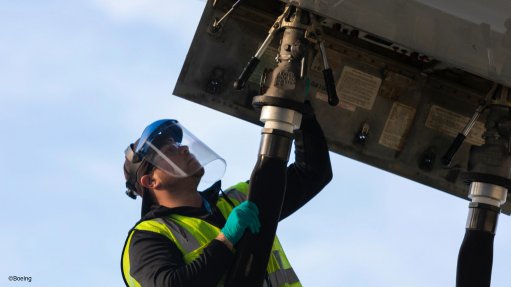Platinum strikers may have shot themselves in the foot
I have been surprised to find that many people know that the Lonmin, Impala Platinum and Anglo American Platinum strike is over but few know the terms of settlement.
Besides other terms, workers whose basic wages were less than R12 500 a month receive a yearly wage increase of R1 000 for the first two years of the agreements and lesser increases in the following years. Those already earning R12 500 a month will receive a yearly increase of between 7.5% and 8%. Living-out allowances will remain the same at Impala and increase at Lonmin. The agreements will run until June 30, 2016. All employees received back pay from the effective agreement dates until January 22, the day before the strike started. This was made available within a week of returning to work. In other words, the miners won 100% on all fronts.
Carl von Clausewitz is a historical military theorist. His teaching on the subject of war is still taught 183 years later at military colleges worldwide. Here are some of his sayings: “The modern wars are seldom fought without hatred between nations; this serves more or less as a substitute for hatred between individuals” and “No one starts a war or, rather, no one in his sense ought to do so without first being clear in his mind what he intends to achieve by the war and how he intends to conduct it.”
I think that the confrontation between the various parties was in every way like war – I may be mistaken but, with deaths on both sides, how so? But the question arises: What do the miners hope to achieve by the war (that is, the strike) in the long term? I think, in their terms, more money now and in the long term. But this is not going to happen. The very essence of the South African mining industry has historically been the following: you send people down a mine, where they facilitate the mining of ore, which is taken out of the mine; the ore is crushed; and you use electricity to send the people down, get the ore out and raise the ore up to surface. Provided labour and electricity are cheap, you make a profit. Then, if you make a profit, you can expand your mining activities.
Now things have changed. Electricity is no longer cheap. It is not priced at the most expensive – by far – but it is significantly far from being the third-cheapest in the world, which was once the case. Now labour, at the recent rates, is no longer cheap. The price of platinum is not going to rise sharply.
Thus, either the mining houses will reduce profits or take a loss. The miners are probably not unhappy about this. However, mining shareholders will be very unhappy, will sell shares, and the whole castle will fall down. Perhaps. Or not.
There are two ways to balance the equation: reduce the underground electrical costs and the cost of hauling men and ore out of the ground. Hauling ore cannot be made more energy efficient – a rock is a rock. What can be done is to reduce the number of mineworkers by using automated hydraulic machines to mine underground, remotely controlled by a surface operator. Then not so many people will be sent underground, thus reducing electrical costs and labour costs.
The underground ore could be preprocessed underground with a primary crusher, reducing the waste component and the costs of hauling it to the surface. The hydraulic pressure could be stored in receiver tanks, which are charged during off-peak electrical times. Thus, the mines can go back to the model of low electricity costs and low labour costs – individuals will be paid well, but there will be far fewer of them and more miners will be jobless.
Is this what the strikers expected? I am reminded of Rupert Murdoch defeating the printers unions in 1984 or 1985. He secretly automated the labour-intensive newspaper printing process and then moved the printing of The Times and other UK newspapers to new premises, resulting in hundreds of job losses. Are we to see a repeat of history? We hope not.
Comments
Press Office
Announcements
What's On
Subscribe to improve your user experience...
Option 1 (equivalent of R125 a month):
Receive a weekly copy of Creamer Media's Engineering News & Mining Weekly magazine
(print copy for those in South Africa and e-magazine for those outside of South Africa)
Receive daily email newsletters
Access to full search results
Access archive of magazine back copies
Access to Projects in Progress
Access to ONE Research Report of your choice in PDF format
Option 2 (equivalent of R375 a month):
All benefits from Option 1
PLUS
Access to Creamer Media's Research Channel Africa for ALL Research Reports, in PDF format, on various industrial and mining sectors
including Electricity; Water; Energy Transition; Hydrogen; Roads, Rail and Ports; Coal; Gold; Platinum; Battery Metals; etc.
Already a subscriber?
Forgotten your password?
Receive weekly copy of Creamer Media's Engineering News & Mining Weekly magazine (print copy for those in South Africa and e-magazine for those outside of South Africa)
➕
Recieve daily email newsletters
➕
Access to full search results
➕
Access archive of magazine back copies
➕
Access to Projects in Progress
➕
Access to ONE Research Report of your choice in PDF format
RESEARCH CHANNEL AFRICA
R4500 (equivalent of R375 a month)
SUBSCRIBEAll benefits from Option 1
➕
Access to Creamer Media's Research Channel Africa for ALL Research Reports on various industrial and mining sectors, in PDF format, including on:
Electricity
➕
Water
➕
Energy Transition
➕
Hydrogen
➕
Roads, Rail and Ports
➕
Coal
➕
Gold
➕
Platinum
➕
Battery Metals
➕
etc.
Receive all benefits from Option 1 or Option 2 delivered to numerous people at your company
➕
Multiple User names and Passwords for simultaneous log-ins
➕
Intranet integration access to all in your organisation


















